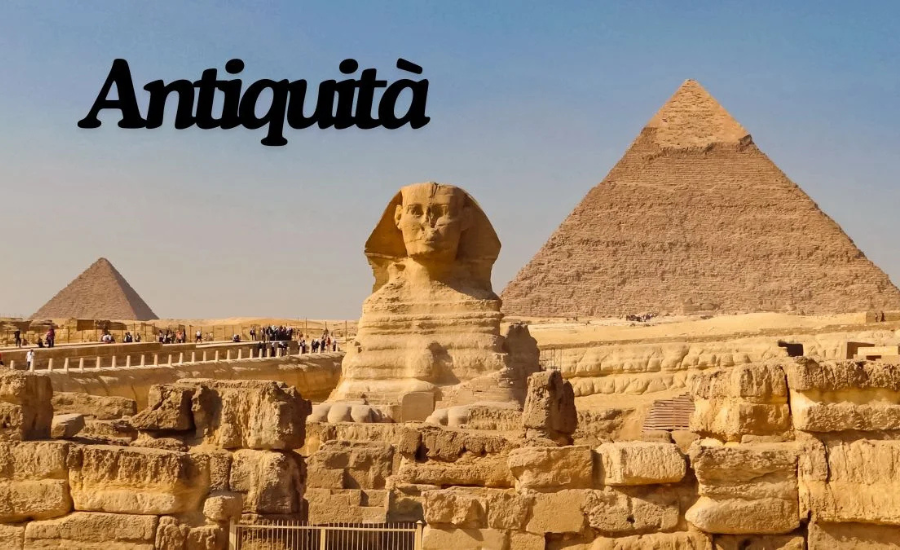The term antiquità refers to a crucial period in history that laid the groundwork for much of modern civilization. Spanning thousands of years, it covers the rise of early human societies up to the fall of the Roman Empire in the fifth century AD. This era marks a time of profound cultural, intellectual, and technological progress that continues to shape the world we live in today.
Throughout antiquità, key civilizations emerged, each contributing to the development of art, science, philosophy, and governance. From the early innovations in writing, law, and architecture in Mesopotamia and Egypt to the philosophical advancements in Greece, these ancient societies set the stage for many of the systems and ideas we rely on today.
The legacies of antiquità remain deeply embedded in contemporary life. The democratic ideals of Athens, Roman legal structures, Greek philosophical thought, and the scientific contributions of ancient cultures still resonate in modern politics, law, education, and technology, demonstrating the enduring impact of this foundational period.
The Ancient Civilizations Of Antiquità: Mesopotamia And Egypt
Mesopotamia, often referred to as the “Cradle of Civilization,” is one of the most significant regions in antiquità. Located between the Tigris and Euphrates rivers, Mesopotamia saw the rise of some of the earliest urban societies. By around 3500 BC, the Sumerians established the first complex societies, marked by groundbreaking achievements such as the invention of writing (cuneiform), the wheel, and the creation of the first cities. These innovations, particularly the development of legal systems such as the Code of Ur-Nammu and the later Code of Hammurabi, form the basis of modern legal practices.
Alongside Mesopotamia, ancient Egypt flourished along the Nile River, contributing greatly to the development of human civilization. The Egyptians are renowned for their architectural wonders, most famously the Pyramids of Giza, and their advancements in engineering, mathematics, and medicine. The practice of mummification, alongside their knowledge of human anatomy, showcases Egypt’s deep understanding of science. Egyptian art, captured in statues, wall paintings, and hieroglyphic inscriptions, offers a rich insight into their culture, religious beliefs, and daily life, marking a profound legacy in the arts of antiquità.
Antiquità And The Dawn Of Philosophy: Ancient Greece
Moving westward, Greece in antiquità stands as one of the most celebrated civilizations due to its contributions to philosophy, science, and the arts. The intellectual vibrancy of Greek city-states, especially Athens, fostered the development of profound philosophical ideas. Thinkers such as Socrates, Plato, and Aristotle laid the intellectual foundations that still shape Western thought today. Socratic questioning, Platonic idealism, and Aristotelian logic continue to be integral to modern philosophy and education.
Beyond philosophy, ancient Greek civilization was pivotal in advancing mathematics and science. Pythagoras, Euclid, and Archimedes made groundbreaking contributions that continue to serve as the cornerstone of modern mathematics and engineering. Greek contributions to astronomy, particularly the heliocentric theory proposed by Aristarchus, predated later scientific revelations by centuries.
Greek culture also celebrated human achievement through literature, theater, and visual arts. The epic poems of Homer, the tragedies of Sophocles and Euripides, and the historical works of Herodotus and Thucydides set the stage for the literary canon. Greek sculpture and architecture, embodying ideals of symmetry and proportion, continue to inspire the artistic world today.
The Rise Of Rome And The Legacy Of Antiquità
Rome’s expansion in antiquità marked a pivotal transformation from a small city-state to one of the most powerful empires in history. Founded in 753 BC, Rome’s growth throughout antiquità spanned Europe, North Africa, and the Near East, creating an empire that reshaped the Mediterranean world. The Roman Republic, and later the Roman Empire, developed political systems that would serve as the model for later governance structures, including democracy and republicanism. Roman law, particularly the codification of laws in the Twelve Tables and Justinian’s Corpus Juris Civilis, remains foundational to modern legal systems.
In terms of engineering, the Romans were unparalleled. Their advancements in architecture, including the use of concrete and the construction of monumental structures like aqueducts, roads, and the Colosseum, have left a lasting imprint on the world. Roman culture was a melting pot, absorbing and adapting the best elements of the civilizations they conquered, particularly Greek influences. However, Romans put their unique stamp on art, literature, and philosophy, creating works like Virgil’s Aeneid, which, while drawing inspiration from Homer, exemplified Roman ideals of duty, valor, and destiny.
Antiquità In The Far East: China And India’s Ancient Contributions
While the civilizations of the Mediterranean have traditionally been the focus of antiquità studies, profound developments were also taking place in the East. Ancient China, under various dynasties, made significant contributions to global civilization. The Shang Dynasty (c. 1600–1046 BC) is known for its development of Chinese writing, bronze metallurgy, and early religious practices. Later, the Zhou Dynasty (1046–256 BC) introduced the Mandate of Heaven, a political doctrine that continues to influence Chinese political thought.
During the Qin Dynasty (221–206 BC), China was unified under the rule of Emperor Qin Shi Huang, who standardized writing, currency, and measurements. The construction of the Great Wall of China also began during this period, symbolizing China’s dedication to defense and unity. Chinese philosophy also saw great advancements, with Confucianism and Daoism offering profound ethical and political insights that resonate in Chinese thought to this day.
In the Indian subcontinent, antiquità witnessed the rise of the Indus Valley Civilization (c. 3300–1300 BC), one of the earliest urban cultures known for its advanced city planning and drainage systems. This was followed by the Vedic period (c. 1500–500 BC), which laid the foundation for Hinduism and structured social hierarchies that influenced Indian society for centuries.
The Maurya Empire (c. 322–185 BC) saw the spread of Buddhism, especially under the rule of Emperor Ashoka. The Gupta Empire (c. 320–550 AD), often referred to as a golden age of Indian culture, fostered remarkable achievements in science, mathematics, astronomy, and literature. Indian mathematicians like Aryabhata and Brahmagupta made significant contributions, particularly in the field of zero and the decimal system.
The Enduring Legacies Of Antiquità
The contributions of antiquità continue to shape modern civilization in ways both visible and subtle. The political ideas of democracy and republicanism, first practiced in Athens and Rome, have become cornerstones of modern political systems. The philosophical inquiries of ancient Greece laid the groundwork for Western intellectual traditions, influencing everything from logic and ethics to political theory.
In science and technology, the advancements of antiquità in areas like mathematics, astronomy, engineering, and medicine laid the groundwork for modern disciplines. The mathematical principles developed by the Greeks and Indians, the engineering feats of the Romans, and the astronomical observations of the Chinese were all critical to the scientific progress we enjoy today.
Culturally, the artistic and literary achievements of antiquità continue to inspire. The works of Homer, Sophocles, and Virgil remain essential to the literary canon, while the architectural wonders of Egypt, Greece, and Rome stand as testaments to human ingenuity and aesthetic sensibility. These legacies are not only symbols of a distant past but active influences in shaping the world we live in today.
Fun Facts About Antiquità
- The First Written Language: The Sumerians, one of the earliest civilizations of antiquità, invented cuneiform writing around 3500 BC. It is considered the world’s first written language, used for record-keeping, laws, and literature.
- The Great Pyramids of Egypt: The Pyramids of Giza, built during the Fourth Dynasty of Egypt, are among the most remarkable architectural feats of antiquità. It took thousands of workers over decades to complete these massive structures, yet they still stand as testaments to ancient engineering.
- Roman Concrete: Roman concrete was a revolutionary building material, stronger and more durable than many modern alternatives. Some Roman structures, like the Pantheon and aqueducts, are still standing today due to the resilience of this ancient invention.
- The Concept of Zero: Ancient Indian mathematicians in antiquità were the first to conceptualize the number zero, revolutionizing mathematics and paving the way for modern calculation methods.
- Socrates Never Wrote Down His Teachings: Famous Greek philosopher Socrates never wrote any of his works down. What we know of his teachings comes from his students, such as Plato, who transcribed his ideas.
FAQs About Antiquità
Q1: What is antiquità?
A: Antiquità refers to the period of ancient history, including the early civilizations of Mesopotamia, Egypt, Greece, Rome, China, and India. This era, spanning thousands of years until the fall of the Roman Empire, is foundational to modern society’s political, philosophical, scientific, and cultural systems.
Q2: Which civilization is considered the “Cradle of Civilization”?
A: Mesopotamia, located between the Tigris and Euphrates rivers, is often referred to as the “Cradle of Civilization” due to its early advancements in writing, law, and urban development.
Q3: How did the ancient Greeks contribute to modern philosophy?
A: Greek philosophers like Socrates, Plato, and Aristotle laid the groundwork for Western philosophy. Their concepts of ethics, logic, and government continue to influence modern thought and educational systems.
Q4: What were some of Rome’s engineering marvels?
A: The Romans were masters of engineering, creating innovations like aqueducts, extensive road networks, and monumental buildings like the Colosseum. Their use of concrete was revolutionary and allowed them to build durable and large-scale structures.
Q5: What impact did ancient India have on mathematics?
A: Indian mathematicians during antiquità introduced the concept of zero and made significant advances in algebra, geometry, and astronomy. Their contributions greatly influenced later mathematical development worldwide.
Conclusion
The period of antiquità has left a profound and enduring legacy, influencing the world we live in today. From the philosophical ideas of ancient Greece to the legal systems of Rome, and the scientific advancements in China and India, the innovations and cultural practices that emerged during this era laid the foundations for modern civilization. These ancient societies shaped key aspects of our politics, education, and technological progress.
The impact of antiquità is still evident in contemporary life. The wisdom and achievements of these early civilizations continue to resonate in our arts, governance, and scientific fields, showing that the lessons and inventions from antiquità remain as relevant now as they were centuries ago.
Stay in touch for the latest updates and alerts by visiting our site: Reimbursement News!



